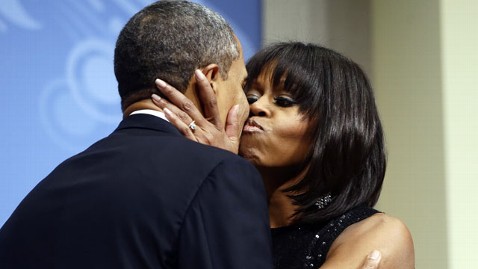A presidential inauguration is a big, long event that lasts all day and into the night–and who has time to really watch it? People have jobs, ones that don’t let you off for a federal holiday.
Everyone (or, at least, some) will be talking about it, which means potential embarrassment for anyone who doesn’t know what happened. Thankfully, ABC employs news professionals stationed in Washington, D.C., to pay attention to these kinds of things and boil off some of the less noteworthy or interesting stuff, presenting you with short videos of everything that really mattered. Or at least the things a lot of people were talking about.
A full day of paying attention to President Obama’s second Inauguration leads one of those professionals to offer these 7 1/2 things:
1. Beyonce Sang the National Anthem
Boy, howdy! Did she ever? Beyonce has essentially become the Obama’s go-to female performer: She recorded a music video for Michelle Obama’s “Let’s Move” initiative in 2011, and she performed at the president’s last inauguration in 2009. Her velvety, soulful “Star Spangled Banner” is getting good reviews.
2. Kelly Clarkson Also Sang
Kelly Clarkson is not as “in” with the First Couple as Beyonce seems to be, but they let her sing “My Country ‘Tis of Thee,” and she did a pretty good job with it. This was kind of weird, though, because at one point she said she loved Ron Paul, although she later said she would vote for Obama.
3. Obama Talked About Gay Rights
This may not seem shocking since more than half the country, including President Obama, supports gay marriage. But the president made a point of mentioning gay rights during his speech, equating the struggles of the LGBT community with those of past civil rights movements, and in doing so made history.
He name-checked Stonewall, the New York City bar that was raided by police in 1969 sparking riots to protest the anti-gay crackdown. And he actually used the word “gay”: “Our journey is not complete until our gay brothers and sisters are treated like anyone else under the law – for if we are truly created equal, then surely the love we commit to one another must be equal as well,” Obama said in his address.
Plenty of inaugural addresses have been chock full of rhetoric about freedom and equality, but in the last four years, the political culture surrounding gay rights has changed significantly, as more states legalized same-sex marriage and as broad swaths of the country got more comfortable with homosexuality in general. Obama’s “evolution” on gay marriage, and now his inaugural address, have helped signify that change.
4. Joe Biden Made Jokes and Shook Hands With People
Could we expect anything less?
Here’s how the Vice President toasting Sen. Chuck Schumer instead of President Obama at the big luncheon: ”I raise my glass to a man who never, never, never operates out of fear, only operates out of confidence, and a guy–I’m toasting you, Chuck.” Watch it:
And here he is, scurrying around and jovially shaking hands with people along the parade route:
5. Richard Blanco Read a Poem That Was Sort of Whitman-esque, But Not Entirely
Cuban-born Richard Blanco became America’s first openly gay, Latino Inauguration poet. He read a nine-stanza poem entitled “One Today,” which set a kind of unifying American tableau scene.
6. Obama and Michelle Walked Around Outside The Limo
President Obama walked part of the parade route, from the Capitol to the White House, with Michelle. They waved to people. It is not entirely abnormal for a president to do this at an inaugural parade. But they walked quite a ways.
7. John Boehner: ‘Godspeed’
The speaker of the House presented American flags to Obama and Biden, telling them: “To you gentlemen, I say congratulations and Godspeed.”
7 1/2. Sasha and Malia Were There.
Obama’s daughters, Sasha and Malia, were there. They didn’t really do much, but they did wear coats of different shades of purple that got a lot of attention on Twitter.
Reports of the daughters looking at smartphones and applying lip gloss highlighted their day. As did this .gif of Sasha yawning.











